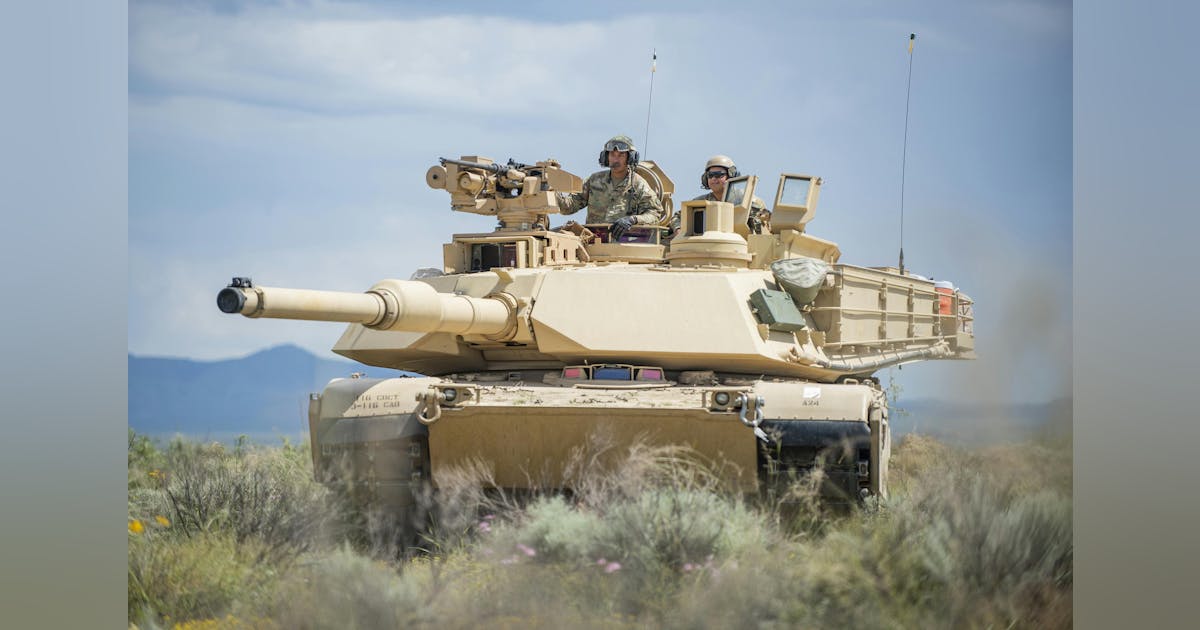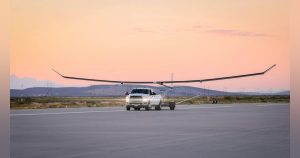M1E3 Main Battle Tank Modernization: How Artificial Intelligence Will Transform Battlefield Threat Ranking
The Dawn of a New Tank Era
The United States Army is undertaking a major modernization effort that promises to reshape ground combat for future generations. Central to this endeavor is the M1E3 main battle tank, set to follow in the footsteps of the renowned M1 Abrams. Going beyond just enhanced armor or superior firepower, this new tank is a complete reinvention, utilizing artificial intelligence (AI) to prioritize and address threats in real-time. This ensures that its crew and allied forces maintain a competitive advantage on the battlefield.
Why Modernize? Lessons from Today’s Battlefields
The drive for the M1E3 program stems from hard lessons learned in recent conflicts, such as those in Ukraine. Tanks unable to rapidly adapt to drone swarms, precision-guided weapons, or swiftly changing enemy strategies risk obsolescence. The US Army recognized that even the impressive Abrams must evolve or face potential defeat against increasingly technologically sophisticated opponents.
Key Drivers:
- Overwhelming battlefield complexity: Modern tanks confront threats from above (drones, loitering munitions), below (mines, IEDs), and from all sides (advanced anti-tank missiles).
- Information overload: Human crews find it difficult to efficiently process information from numerous onboard sensors and a broader battlefield network.
- Sustainability: Heavier armor and more powerful engines may demand more fuel and logistical support—a disadvantage in prolonged engagements.
The solution? Make the tank smarter, lighter, more flexible, and, most importantly, AI-driven.
The AI Revolution: How M1E3 Sees, Thinks, and Fights Differently
AI for Threat Ranking
In contrast to previous designs where crews manually evaluated threats, the M1E3 will incorporate AI systems to automatically identify, classify, and prioritize threats based on data from sensors and battlefield networks. When danger arises—such as an anti-tank missile team detected by heat signature, a drone’s electronic presence, or radar targeting from an enemy helicopter—the AI quickly assesses the situation:
- Threat Level: How immediate is the risk to the tank or its allies?
- Type and Proximity: What kind of threat is it, and how close is it to causing damage?
- Recommended Action: Should the tank retreat, open fire, call for support, or deploy countermeasures?
This real-time assessment empowers the crew to act rapidly and accurately, minimizing the likelihood of being caught off guard.
Battlefield Networking
The new AI won’t work in isolation. The M1E3 will function as a networking hub, sharing its threat evaluations with other combat vehicles, infantry, and even unmanned systems (such as robotic mini-tanks or aerial drones). Envision an armored brigade that swiftly discerns the most significant threats, identifies them, and determines suitable responses—akin to an armored hive mind.
Autonomous Capabilities and Manned-Unmanned Teaming
AI integration positions the M1E3 to collaborate with robotic entities, potentially managing or working alongside unmanned ground and aerial drones. This manned-unmanned partnership will enable tanks to explore hazardous regions, outflank adversaries, and execute precise lethal strikes, all with fewer soldiers placed in danger.
Advanced Sensors and Targeting
With advanced thermal, infrared, and radar sensors, the M1E3’s AI will monitor threats day and night, merge sensor inputs to defy enemy concealment tactics, and swiftly suggest the optimal type of ammunition to counter a target, whether it be a hypersonic shield-buster for heavy armor or airburst explosives for drones.
Beyond AI: The Other Innovations in the M1E3
While AI features dominate the discussion, the M1E3’s updates are all-encompassing:
- Hybrid-Electric Propulsion: Reduces weight and fuel consumption and allows for quiet, heat-lowered operation, enhancing stealth and sustainability.
- Unmanned Turret with Autoloader: Streamlines operations with a three-member crew and boosts engagement times while freeing weight for more armor or new systems.
- Modular Open Systems Architecture (MOSA): Enables swift upgrades, akin to installing new apps on a smartphone.
- Integrated Modular Armor: Tailorable protection, including advanced active protection systems to thwart incoming missiles or drones.
- Signature Management: Lowers thermal and electromagnetic visibility, making the tank harder to detect or target.
Real-World Impact: How Will Crews and Commanders Benefit?
- Cognitive Relief & Faster Decisions: Crews allocate less mental bandwidth to understanding battlefield scenarios and concentrate on actual combat—the AI works as a battlefield “co-pilot,” unfailingly watching every detail.
- Higher Survivability: By promptly identifying threats—even those invisible or misrepresented—the M1E3 can deploy countermeasures, reposition, or request support preemptively.
- Better Teamwork: With shared situational knowledge among units, entire formations perceive and react to threats simultaneously, facilitating coordinated responses like joint assaults and synchronized maneuvers.
Human Stories & Expert Insights
“Recent and ongoing conflicts have exposed the limitations of heavy, standalone tanks,” remarks Brigadier General Geoffrey Norman, a modernization leader. “We need a tank that integrates into the networked force, where AI enhances both shield and strike capabilities.”
Major General Glenn Dean adds: “Protection needs internal integration—not just an external addition. That’s achievable with a digital brain commanding defenses.”
Crews testing the AI-driven systems report feeling more confident and less overwhelmed by alerts and data feeds.
Comparing Old vs New: Abrams Evolution at a Glance
| Feature | M1A2 SEPv3/4 | M1E3 (Next-Gen, AI-Driven) |
|---|---|---|
| Crew Size | 4 | 3 |
| Main Gun | 120mm smoothbore, advanced rounds | New gun, autoloader, hypersonic/ATGM-capable |
| Threat Management | Crew-judged, basic computers | AI-driven threat ranking, action suggestions |
| Sensors | Upgraded thermal/IR | Next-gen multi-spectral, AI-integrated |
| Weight | 70–75 tons | Targeting below 60 tons |
| Propulsion | Gas turbine | Hybrid-electric (fuel-saving, quieter) |
| Armor | Composite + add-on kits | Modular/integrated, active protection |
| Digital Networking | Limited | Full battlefield integration, manned-unmanned teaming |
How Far Along Is the Program?
- $150 million contract awarded to General Dynamics Land Systems to initiate M1E3 technologies.
- Prototypes and test platforms are under design, with full operational readiness expected by the early 2030s.
- Some features, such as open systems and improved sensors, continue from the SEPv4 program for expedited deployment.
- Existing Abrams models’ production (SEPv3) will proceed at a diminished rate until the M1E3 design is finalized.
The Big Picture: What Does This Mean for the Future of Warfare?
The M1E3 initiative is much more than just upgrading a tank—it’s an insight into how artificial intelligence will fundamentally alter future military vehicles. Standing still is not an option, and the US Army is investing heavily in the belief that intelligent, networked, AI-empowered armor will ultimately outmaneuver, outlast, and outfight upcoming threats.
A tank commander insightfully said:
“With the new M1E3, it feels like having a whole battle staff in the turret—always vigilant and helping stay a step ahead.”
If Hollywood ever films “WarGames: 2040,” expect the M1E3’s AI co-pilot to steal the spotlight.
Fun Fact: Tanks in Pop Culture
If you indulge in games like “World of Tanks” or appreciate films such as “Fury,” visualize multiplayer with AI threat ranking. Surprises from stealthy tank destroyers would be a thing of the past—your digital ally would spot them first. The future is nearer than you think.
In Conclusion: The Human-AI Partnership
The M1E3’s aim isn’t to displace human crews but to bolster them—liberating soldiers from the “busywork” of sorting threats, so they focus on victory. In circumstances where milliseconds spell the difference between victory and disaster, fusing human judgment with digital swiftness is the winning formula.
Stay updated as the first M1E3s emerge in the next decade—ushering not only the advanced generation of tanks but a revolutionary combat approach.













